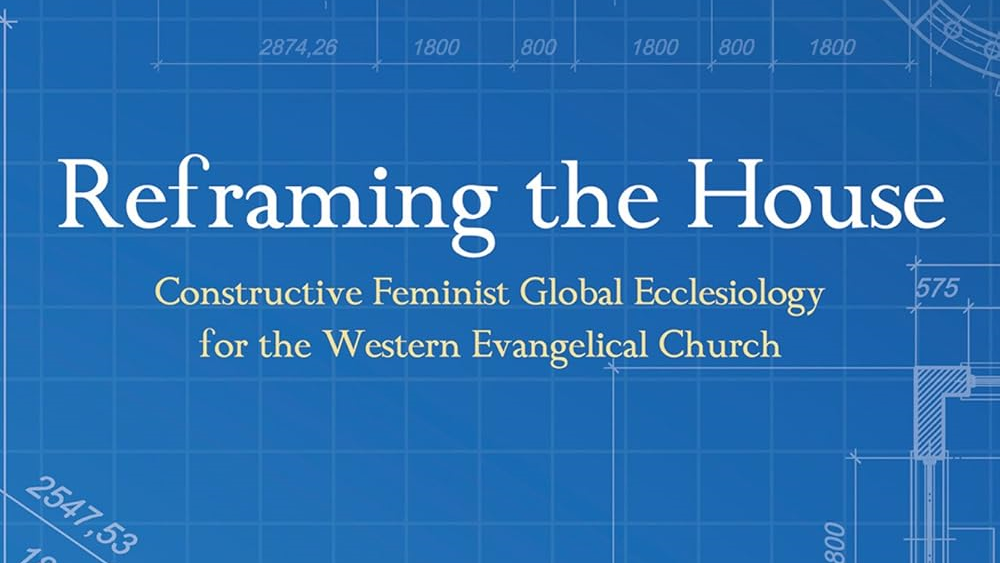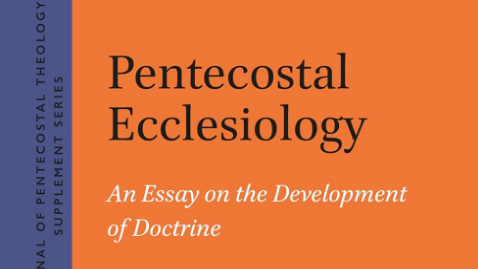Creation Care and our Moral Imperative

Table of contents
This article seeks to prove to a Protestant/Evangelical congregation that it is time for the church to recognize the dire situation that we are in with respect to climate and environmental change. It creates a dialogue starting with a historical-scientific argument, then lays a theological basis for engagement with creation care, including Native American ‘harmony’ ethicsIt seeks to prove that to live missiologically in today’s age is to be environmentally responsible too. There are no two options, and this is a time to act.
Part I: What is the issue, and why the sense of urgency?
The historical trajectory of climate change.
The Bible was written in the Holocene era, but since the 1950s, we have been slated to be in the Anthropocene[1] era—the time when humans have a clear and present dominant influence on the nature, climate, and environment of today. Apostle Paul did not envision the corruption of the Earth as we see today, nor was climate science a major topic of the New Testament.
We must acknowledge the realities that are present before us. As we dwell on this issue, we recognize God as the creator and honor him more. John Tyndall suggested in the 1850s that the ‘Greenhouse effect‘ was the result of the emission of carbon dioxide (CO2), demonstrated later by Guy Stewart in 1938. In 1975, Wallace Broecker[2] published a treatise called “Climatic Change: Are we on the brink of a pronounced Global Warming?”[3], and is also credited with the term ‘Global Warming’. However, the preferred term is “climate change” as the harmful effects on this planet are more than just increasing temperatures. The findings have been mostly accurate after all these years. So, contrary to what we believe in the church now, we have gotten the science right. Scientists have gotten it right long before politicians made it a hot-button issue, creating the impasse we see now and, therefore, the analysis paralysis and consequent inaction. Denial is a form of self-defense, and aligning ourselves with whosoever thinks alike is not an option. This seems to be the general state of the church– never discussing climate change, but we are changing that today.
The situation we are in now.
In a news story that was published yesterday[4], a town called Salisbury, MA, spent $500,000 protecting themselves from rising waters along the coast. The dunes were wiped out in three days! The one word to describe it all by the resident – ‘catastrophic.’ That is the situation we are in – catastrophe. Some of the effects of climate change are[5] –
| Hotter temperatures | Not enough food |
| More severe storms | More health risks |
| Increased drought | Poverty and displacement |
| A warming, rising ocean | Water scarcity |
Here are some more data and thoughts to consider as we mull over and move forward.
- Generations of balance have been upended – just since the Industrial Revolution.[1]
- 85% of all carbon released into the atmosphere has been in the last 85 years.[2]
- 350 ppm is the safe carbon dioxide level in the atmosphere. We are at 400 today.[3]
The simplest version of the hard truth that we face today is that climate change is accurate, and it’s getting worse because of us humans. It is not only a moral threat but a theological and physical one, leading us to catastrophe. We need to work out the energy ‘trilemma’[4] – the three-pointed challenge of maintaining energy security while keeping energy affordable—and also trying to meet climate targets. It is every nation and society’s prerogative that we do so immediately.
Evangelical Christians have made great strides in being concerned about preserving God’s creation. Evangelicals have written books, released declarations, and implemented activities on various related climate issues since the 1990s, including theoretical foundation, climate change, biodiversity loss, and sustainable agriculture. However, the idea of creation care as a manifestation of the Christian mission has remained foreign, strange, or even incorrect to many. The minority evangelicals who have dedicated many years of their lives to creation care have become accustomed to being disregarded, marginalized, or looked down upon by their peers. We shall look at some of the theological foundations for engaging in creation care and climate justice[5].
Part II: Theology of creation care and climate justice.
The Christian reason for creation care.
Evangelical theology and missiology have largely failed everything outside of God’s human creation. A nominal Protestant evangelical is engrossed with saving ‘souls’ and a quest for numbers, either in church growth or an increase in the number of ‘souls’ harvested. We know we are a three-part being – Spirit, soul, and body. In saving only ‘souls,’ we have barely completed the salvation of a whole person. But the entirety of God’s creation – outside of humanity groans for Christ-loving humans to take their justified position as stewards of all things that were created – by God.
Where our biblical understanding of mission lacks is that it should begin with the creation accounts of Genesis 1-3 and not with the Great Commission of Matthew 28:18. In the first account, there is a recurring theme in God’s accomplishment. God saw that – “it was good”[6]. Then, God rested[7], handing over stewardship and authority, entrusting the man and woman to nurture, protect, and live within all that was good.
God created all creation. And all creation exists for God. Psalm 24:1: “The earth belongs to the Lord and everything in it.” The roles and responsibilities are clear. God still holds ownership of the Earth, and it has been given to us for stewardship. It has not been handed over for us to abuse as we please. We have to understand that the Earth and all its resources are not ours, but we use them for our benefit and hopefully return the favor given to us by being good caretakers. We need to use natural resources with gratitude and practice natural habitats where possible. The old adage comes to mind – “leave nothing but footprints, take nothing but memories”. How are we embodying this as Christians? The creation account also makes one more implication – that we are created from the same substance that God created all non-human forms from. Just as the Trinity – the Father, Son, and the Spirit share the same substance and are inter-penetrated beings, we are of the same substance as animals and plants, interwoven and interconnected. The difference is that we were physically formed in the image of God, and the Spirit was breathed into us, giving us life and intelligence that non-human forms cannot even fathom. But realizing it only makes us more grateful for who we are, not being prideful and arrogant with the creation that is not like us.
We Christians believe that in Christ, all things are being reconciled by the Father. Col 1:19-20 says that the Father is reconciling all things – humans, non-humans, plants, animals, land, and all things created by Him. Creation is being made new. Once pronounced to death and destruction[8], God is, in turn, reconciling, redeeming, and restoring all things to it’s intended state in the new heavens and the new earth[9] that awaits us. What, in the meantime, are we to do? A proper and biblical understanding of God’s work will enable us to join in the effort – in reconciling and restoring all things. It will enable us to change our hearts and minds and to view the world not as a resource-rich playground for human beings to pillage but rather as a garden that needs to be nurtured for everyone’s prosperity and flourishing until God completes his redemptive work through the Spirit.
Evidently, we still need to accomplish our mandate as good stewards. We see the results of that, as God has predicted. We have provoked disorder in creation. Hos 4:3 –
“Therefore the land will mourn; And everyone who dwells there will waste away. With the beasts of the field. And the birds of the air; Even the fish of the sea will be taken away.”
It is critical to realize before it’s too late, and it is late already, that God cares for all creation – the land, the beasts of the field and the air, and the fish of the sea. God knows and loves all these nameless creatures. While we profess our love only for named human beings, we fail even at that. Our symbiotic relationship with creation has been broken, and “everyone who dwells there wastes away.” We have started to see the physical manifestations of this lately.
In 1990, Pope John Paul II engaged with his message on the World Day of Peace with the theme: “Peace with God the Creator, Peace with all creation”[10]. He reiterated our relationship with the earth around us. “In our day,” he wrote, “there is a growing awareness that world peace is threatened . . .also by a lack of due respect for nature.”
In 2010, Pope Benedict XVI said, “Without entering into the merit of specific technical solutions, the Church is nonetheless concerned, as an “expert in humanity,” to call attention to the relationship between the Creator, human beings and the created order”[11].
This is not solely an Evangelical, Catholic, or Christian issue. However, a large portion of Christianity has acknowledged the problem long before we have. By doing so, we recognize the importance of serving God by taking responsibility for His creation. We have only started to address this matter, and there is still much more to be done.
The Native American ethics and reason for creation care.
The Native American concept of harmony and consequent balance can help us understand the issues of today and move forward into tangible action. The relationship between humans, plants, and animals has suffered dramatically, and the cost of mistreating these priceless resources the Creator has so generously provided is only now becoming apparent. Our route to world peace lies in a reexamined conception of shalom on Earth and the corresponding conceptions held by indigenous peoples. The Hebrew word “Shalom” is most generally understood as ‘peace.’ But more imagination and learning reveal that it includes “concordance, completeness, wholeness, health, peace, welfare, safety, soundness, tranquility, perfectness, fullness, harmony and many more” [12]. The ‘harmony’ of native thought expounds that all creation is one, living in harmony and community with one another. There is an inherent connection between the peace among creation and the harmony we enjoy. This theoretical construct is not peculiar to one tribe. Still, similar constructs have been found in most native peoples that span countries and borders, having commonalities with the Maasai and the Zulu of Africa, the Inuits of Alaska, and the Australian Aborigines. All parts of creation are connected– humans, animals, plants, and, most notably, the land on which we live and die. Humans should allow for the idea that all creation reflects the Creator’s image in these kinds of partnerships and make space accordingly. We are to seek harmony with all of God’s creation proactively. Even if we ignore all climate data, it is natural, moral, and intuitive to be one with nature.
Conclusion
Can we keep disregarding the issues brought on by facts like desertification, climate change, the degradation and decline in productivity of large-scale agricultural zones, contaminating rivers, causing extinction of ecological diversity, intensifying catastrophic events, and clearing forests in all regions of the world? Is it possible to ignore the increasing number of “environmental refugees” who are forced to leave their natural habitats and face relocation? Should we not pay attention to the conflicts that arise over the use of natural resources, both in the present and in the future? These issues significantly affect the achievement of human rights, including individual rights to food, shelter, clothing, health, and safety. In conclusion, we cannot afford to sit idly by and must take action to address these pressing environmental concerns.
Bibliography
[1] “Climate Change And The Astrobiology Of The Anthropocene.”
[2] “Wallace Broecker, Prophet of Climate Change.”
[3] Antal, Climate Church, Climate World, 14.
[4] “$500K Sand Dune Designed to Protect Coastal Homes Washes Away in Just 3 Days.”
[5] “Causes and Effects of Climate Change.”
[6] Antal, Climate Church, Climate World, 14.
[7] Antal, 14.
[8] “Why 350?”
[9] “The Energy Trilemma.”
[10] Bell, Creation Care and the Gospel, 68.
[11] New King James Version (NKJV), Gen 1:10.
[12] New King James Version (NKJV), Gen 2:3.
[13] New King James Version (NKJV), Rom 8:21.
[14] New King James Version (NKJV), 2 Pt 3:13.
[15] Schaefer, Environmental Justice and Climate Change, Preface, x.
[16] Schaefer, Preface, x.
[17] Woodley, Shalom and the Community of Creation, 22.
[18] “The Cape Town Commitment,” 32.
[19] Bell, Creation Care and the Gospel, 68.
[20] Bell, 46.
[21] Woodley, Shalom and the Community of Creation, 28.
[22] Brueggemann, Peace, 18.



